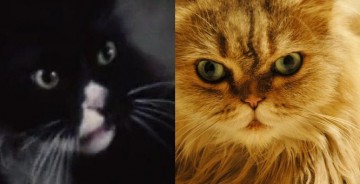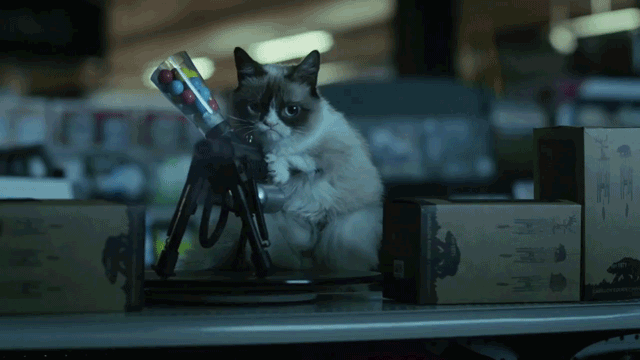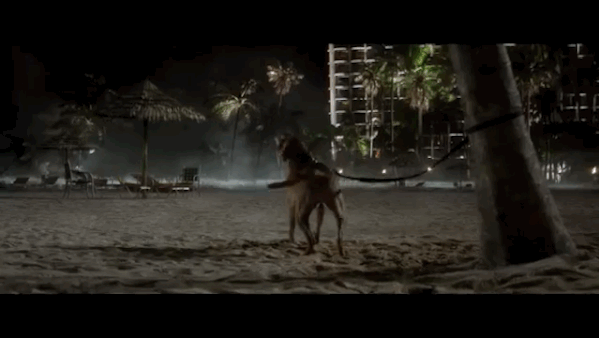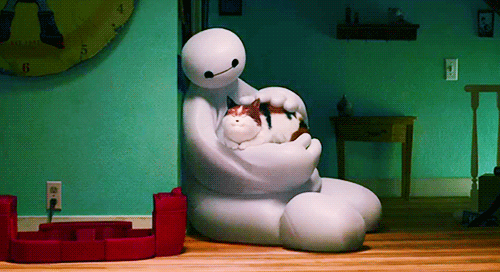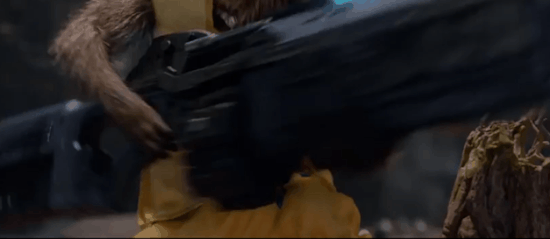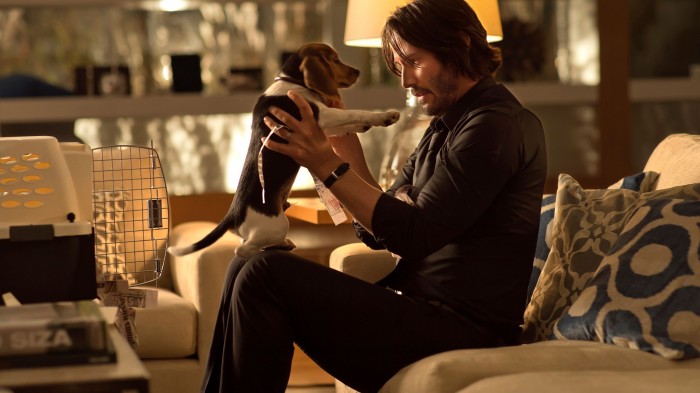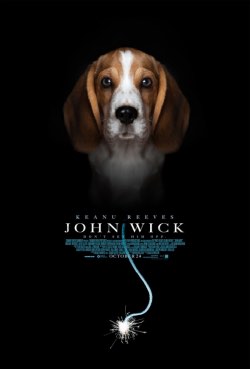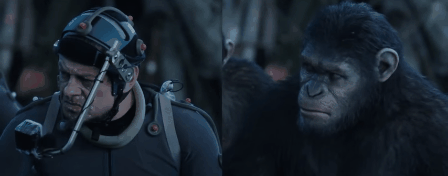The Best Movie Animal Performances Of 2014
I was watching Gone Girl for the fourth time and admiring how David Fincher (and his cinematographer Jeff Cronenweth) majestically shot Ben Affleck's character Nick Dunne's cat and I began to wonder about the cat's true role in the story. The cat is featured too prominently to be just a background prop. What did the cat mean?
As I thought about this I began to realize that there had been a lot of big screen kitties this year. The New York Times notes in their review that "cats are the new dogs," and judging from the list of animals in this article, they might be right. But as I started to think about it more, it wasn't just cats but dogs and some actually amazing performances by other animals in this past year of film. So the list of best animal performances of 2014 grew and grew. After the jump you will find my examination of why 2014 was the year of animal movie performances and what it all means.
Best Animal Performances of 2014
This list is not ordered or ranked. We attempt to break down how the animals played a role in their respective film, using excerpts from reviews and editorials to highlight theories and interpretations, sometimes ridiculous.
Spoiler warning: Possible spoilers may be discussed for any of these films, so if you haven't seen the movie and are spoilerphobic, skip the text of that entry.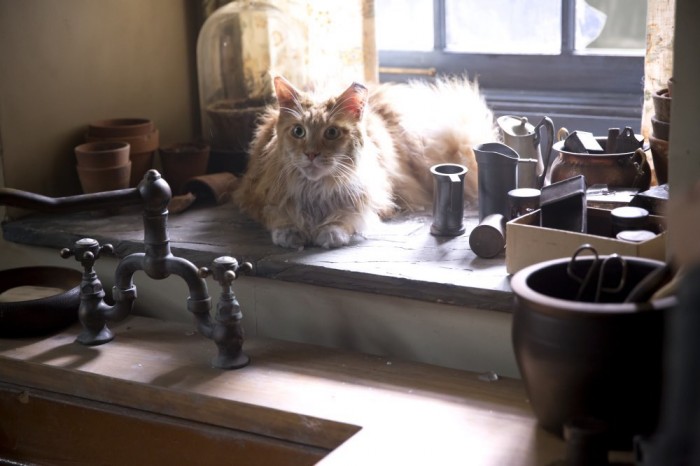 Buttercup the cat from The Hunger Games: Mockingjay Part 1
Buttercup the cat from The Hunger Games: Mockingjay Part 1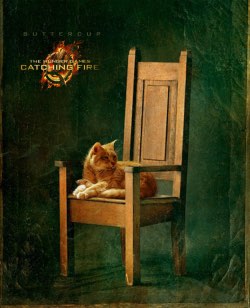 In Mockingjay, Katniss returns to District 12 to see the destruction. While in her old home district, she also drops the remains of her old house to pick up a few things — and that is where she finds Buttercup, her sister Primrose Everdeen's cat. She remarks that of course the cat survived and not Prim's goat because the goat actually served a purpose in the household. But the cat nearly kills them both when Prim goes back to get the cat when the capitol is bombing the underground headquarters. They all survive and despite rules against the practice, Katniss makes a deal to keep the cat in the bunker.
In Mockingjay, Katniss returns to District 12 to see the destruction. While in her old home district, she also drops the remains of her old house to pick up a few things — and that is where she finds Buttercup, her sister Primrose Everdeen's cat. She remarks that of course the cat survived and not Prim's goat because the goat actually served a purpose in the household. But the cat nearly kills them both when Prim goes back to get the cat when the capitol is bombing the underground headquarters. They all survive and despite rules against the practice, Katniss makes a deal to keep the cat in the bunker.
But Buttercup's true purpose in the film is to become a metaphor. Hogwartsprofessor.com explains the real significance of Buttercup in this film:
"Most obviously, Katniss's name suggests a connection to cats. Katniss is a hunter. At the beginning of Mockingjay, Buttercup makes an appearance and is well fed. Katniss assumes that Buttercup has survived by hunting field mice. In District 13 Katniss states that Buttercup will be expected to hunt to feed himself if he misses curfew. In the shelter in District 13, Buttercup becomes a celebrity. Katniss is clearly portrayed as a celebrity. Their methods of obtaining celebrity are even similar. Buttercup wins the hearts of the people of District 13 by playing a game of chasing light from a flashlight. There is no way for him to really win the game and the light is always out of reach. Katniss gains celebrity status by participating in a game that is hopeless. She finds out in Mockingjay that even the victors who have won the game haven't really won. The Capitol continues using and abusing the victors even after they exit the games. Every victor has personality issues that began with participation in the Hunger Games. Most telling, Katniss even states "I am Buttercup" in chapter 11 of Mockingbird at the start of an extended simile relating Buttercup's relationship with the light and Katniss's relationship with Peeta."
Buttercup didn't have a huge part in the overall plot of Mockingjay but her appearance has been the topic of much fan debate. The cat was originally black-and-white when she appeared in the first Hunger Games movie, but series author Suzanne Collins asked to have it changed to an orange cat as she had described in the books. Director Francis Lawrence followed through on this request, angering some fans. But Hollywood casting ginger cats seems to be a new Hollywood trend.
The USA Today blog Entertain This believes the cat is the biggest survivor story of the Hunger Games films:
The Hunger Games: Mockingjay — Part 1 is filled with great warriors and survivors. But no survivor story is more impressive than Buttercup the cat. It's a cat against the Capitol and the cat still lives. Buttercup has not only survived the first two death-filled Hunger Games installments, but even President Snow's brutality on the home district in Part 1. As Willow Shields, who plays the doting cat owner Primrose Everdeen, says: "Somehow Buttercup has lived through all these crazy experiences."
The cat is so popular in the Hunger Games fan community that fans have created a character poster for her, seen above right.
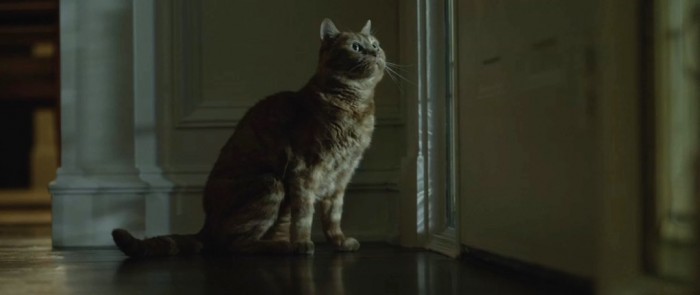 Nick Dunn's Cat Bleeker From Gone Girl
Nick Dunn's Cat Bleeker From Gone Girl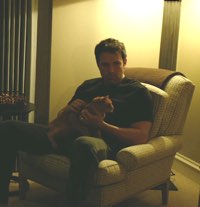 There is perhaps no cat more majestically photographed than that the animal owned by Ben Affleck's character Nick Dunn from David Fincher's Gone Girl. The house cat, named Bleeker in the book, has a significant amount of screen time, watching silently as the couple's marriage collapses. Later, he peers outside watching the media circus unfold. John Powers writes in Vogue that the cat is "an emotional marker" and HelloGiggles suggests that his placement in scenes is strategic, swaying sympathy towards either Nick or Amy.
There is perhaps no cat more majestically photographed than that the animal owned by Ben Affleck's character Nick Dunn from David Fincher's Gone Girl. The house cat, named Bleeker in the book, has a significant amount of screen time, watching silently as the couple's marriage collapses. Later, he peers outside watching the media circus unfold. John Powers writes in Vogue that the cat is "an emotional marker" and HelloGiggles suggests that his placement in scenes is strategic, swaying sympathy towards either Nick or Amy.
"When Nick is clutching the cat in the guest room the night of Amy's return, he isn't just protecting himself from Amy—he's protecting the cat. When he wakes the next morning and goes down to the kitchen, however, the cat is sitting on the counter with Amy—almost exactly positioned as the pawn to her queen. He's there until the very end, and repeatedly referenced throughout the film, regardless of screen time. From "That's the cat's room" to "Where is the cat food?" both director David Fincher and the book's author and screenwriter Gillian Flynn, make sure the cat never fades out of the script. By successfully illustrating a relationship fraught with instability and mutual cruelty, Fincher allows for the character of the cat to exist independently of the action, but still provides a purpose for the lil' guy in the hearts of the audience. If you haven't seen the film yet, keep an eye out for this amazing creature. He knows all."
The Huffington Post even asked author and screenwriter Gillian Flynn who revealed the following:
"There's a screenplay book called 'Save the Cat.' It's all about making your character likable," Flynn said. "In the first 10 minutes he should do something that makes you like him. I enjoyed that in the first 10 minutes he literally saves the cat." Affleck responded "And yet you still don't like him," to which Flynn quipped: "I liked him, I love that he's so devoted to his cat."
The cat is actually the reason Nick comes home to find his living room trashed — a neighbor called him to let him know his cat had escaped and was wandering around the front yard. Nick's cat even has his own room in Amy and Nick's rather large suburban house.
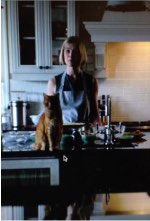
It is clear the cat doesn't care much for Amy, but we do see that Amy wins over the cat in the end by the end of the story (David Fincher notes this on the film's audio commentary) but Gillian doesn't buy that theory – "I feel like Amy is playing Cool Girl again at that point by letting him up on the counter."
Ben Affleck has joked that the real cat is "a half-dead cat" and David Fincher elaborated on that comment in the film's audio commentary.
"I love this cat. This cat's name is Cheeto, because he looks like a Cheeto. Cheeto was not very healthy. I think Cheeto was a little dehydrated. His fur was a little greasy and kind of matted. He didn't seem to hear very much. I don't know that he saw very much, but the beauty of Cheeto was wherever you placed Cheeto, that's where he was going to stay for that day. So continuity with Cheeto was never an issue. If you put Cheeto on the stairs, you can shoot for nine hours and at the end of the day, go, Cheeto's at the bottom of the stairs and you can pick him up. He was fantastic."
One blog post I found went on an angry rant about how David Fincher snubbed the cat by not including it in the credits:
I think this is truly inexcusable. That cat could act, yet Director David Fincher chose to snub it in the credits. What cat would just sit on a kitchen counter while Mr. Fincher requested the actors do a scene 20 times, plus or minus five? I don't know if this happened for a fact with the cat, but I do know that no scene I appeared in was performed less than 15 times and most were well north of that. Why should a scene with a cat be any different? I suppose I could be unjustly blaming Fincher for not giving the cat credit. Maybe there was no actual cat used in the movie. Perhaps, the cat acted so perfectly, because it was CGI, a total electronic creation of bits and bytes, the only differences from a bloodthirsty T-Rex in "Jurassic Park" is that e-Bleeker is a lot smaller, cuter and much better behaved. Far fetched? Possibly, but there are six different special effects companies and their couple hundred employees listed in the credits as working on "Gone Girl". They had to do something. A CGI cat is the only explanation I can fathom as to why no cat or cat wrangler is listed in the credits. Practically everything and everyone else is listed.
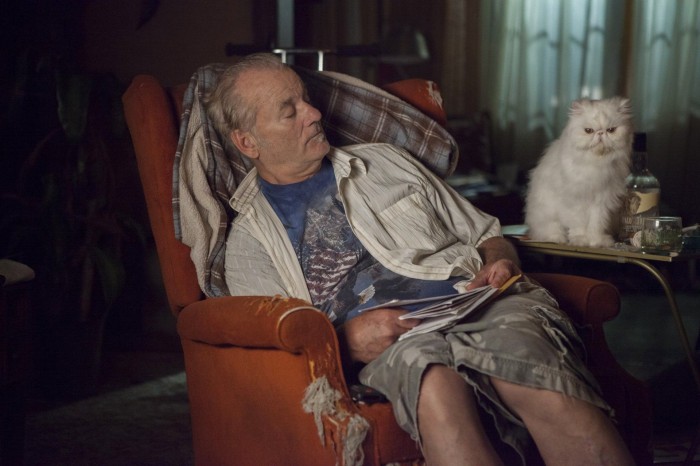 Felix in St. Vincent
Felix in St. Vincent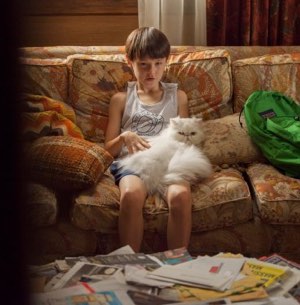 In St. Vincent, Bill Murray plays an old alcoholic veteran who lives alone with his cat in a run-down Brooklyn house. Felix doesn't have a huge role in the plot of St Vincent. The feline is both a reflection of the main titular character as well as a way to humanize him. But Felix is on this list because he somehow steals the spotlight from Bill Murray every chance he can get. Vulture called Felix the "cutest cat of the 2014 awards season":
In St. Vincent, Bill Murray plays an old alcoholic veteran who lives alone with his cat in a run-down Brooklyn house. Felix doesn't have a huge role in the plot of St Vincent. The feline is both a reflection of the main titular character as well as a way to humanize him. But Felix is on this list because he somehow steals the spotlight from Bill Murray every chance he can get. Vulture called Felix the "cutest cat of the 2014 awards season":
All the promotion for St. Vincent has centered around Bill Murray. It makes sense: He's the star of the movie; and he's Bill Murray, the internet's favorite uncle. However, those who've seen St. Vincent know Murray isn't the breakout. And, no, it's not the little kid. It's the cat. Murray's character Vincent has a cat named Felix, and it's the best cat, full stop. He's just a wonderful, fluffy, lush Persian with a face so grumpy, it makes Bill Murray at the beginning of Groundhog Day look like Bill Murray at the end of Groundhog Day.
The production notes for the film reveal that Murray committed to Felix despite being allergic:
Unfortunately Murray is allergic to cats, but in another show of his commitment to the film, he tolerated the feline cast-mate. "Not a cat guy particularly, but that cat happened to get washed, shampooed and blown dry so he had no dander," jokes Murray. "I don't think he even had hair oil because he was so clean. He's a pro cat."
You can see some behind the scenes photos of Murray holding the cat at arms length on shadeddreampersians.
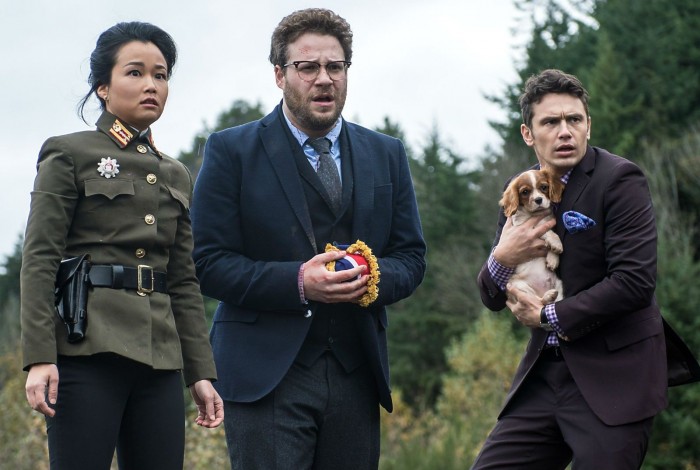 Kim Jong Un the Puppy in The Interview
Kim Jong Un the Puppy in The Interview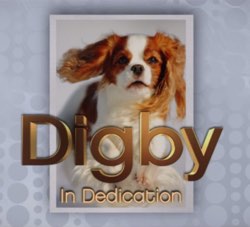 The Sony Pictures hack resulted in The Interview becoming the most notorious movie of the year. As you know, the movie follows talk-show host Dave Skylark (James Franco) and his producer (Seth Rogen) on a trip to North Korea to interview dictator Kim Jong Un, where they're also expected to pull off an undercover assassination. During the visit, Kim gives Skylark a cute puppy, a tribute to the TV star's childhood pet Digby, which they name Kim Jong Un. SF Gate notes the stakes when it comes to introducing the puppy:
The Sony Pictures hack resulted in The Interview becoming the most notorious movie of the year. As you know, the movie follows talk-show host Dave Skylark (James Franco) and his producer (Seth Rogen) on a trip to North Korea to interview dictator Kim Jong Un, where they're also expected to pull off an undercover assassination. During the visit, Kim gives Skylark a cute puppy, a tribute to the TV star's childhood pet Digby, which they name Kim Jong Un. SF Gate notes the stakes when it comes to introducing the puppy:
"Violence? You bet. And it is gratuitous. When Kim gives Skylark a cute puppy as a tribute to the TV star's childhood pet Digby, the gesture is funny in part because you wonder just how far the writers — Dan Sterling, Rogen and Goldberg — will go for a laugh."
It is amazing how much comedic tension a puppy can add to the already dangerous situation, especially in the hands of the unpredictable team of Rogen and Goldberg. But the puppy doesn't due — instead Skylark and his producer Rapaport flee with the young dog during the climactic third act escape sequence. But as one of my colleagues puts it:
The Cavalier King Charles spaniel puppy is actually named Wolfgang (see some photos of him here). The name Digby was used as a tribute to co-writer/co-director Evan Goldbergs' childhood dog (Digby also gets a dedication in the end credits: "Digby – In Dedication"). Seth Rogen's actual dog Zelda plays the grown up version of Digby at the end of the movie Zelda also appeared as Jonas Hill's dog in This Is The End).
Grumpy Cat in Grumpy Cat's Worst Christmas Ever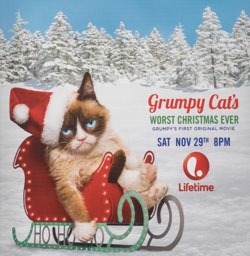 I have to admit that I haven't seen this Lifetime television movie, but this list would not be complete without the internet sensation. Voiced by Aubrey Plaza in the first internet meme turned movie tells the story of a lonely cat living in a mall pet shop who never gets chosen by customers until one day during the holidays, a 12-year-old girl falls in love with her after realizing she is the only person who can hear this unique cat talk. And of course, Grumpy reluctantly thwarts the kidnapping of an exotic dog she dislikes, and on Christmas Eve rescues Chyrstal after the mall closes.
I have to admit that I haven't seen this Lifetime television movie, but this list would not be complete without the internet sensation. Voiced by Aubrey Plaza in the first internet meme turned movie tells the story of a lonely cat living in a mall pet shop who never gets chosen by customers until one day during the holidays, a 12-year-old girl falls in love with her after realizing she is the only person who can hear this unique cat talk. And of course, Grumpy reluctantly thwarts the kidnapping of an exotic dog she dislikes, and on Christmas Eve rescues Chyrstal after the mall closes.
The film has a horrible 30% rating on Rotten Tomatoes with one of the more positive reviews, Tim Goodman of the Hollywood Reporter claiming that "The Christmas miracle of this movie is that Grumpy Cat's Worst Christmas Ever isn't the worst Christmas movie ever."
But if you're not going to watch the movie, at least watch Plaza hilariously talk about her experience dealing with the millionaire cat diva as well as her experience making the movie in this appearance on Jimmy Kimmel.
Dog in Godzilla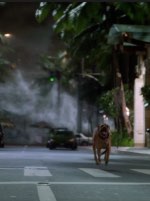 Gareth Edwards channels Steven Spielberg in moments of the 2014 Godzilla reboot, and one moment in particular involves a dog tied up to a tree on the shore of a Hawaiian island as an incoming tsunami heads for the shore, caused by the infamous monster.
Gareth Edwards channels Steven Spielberg in moments of the 2014 Godzilla reboot, and one moment in particular involves a dog tied up to a tree on the shore of a Hawaiian island as an incoming tsunami heads for the shore, caused by the infamous monster.
Of course, the humans run leaving the dog to escape on his own — which he does in the last seconds. Dramatic license is definitely taken as the dog outruns the tsunami and even bypasses the humans who left him to his death. We see several tourists find shelter inside a building but we don't see what happens to the dog. While the ever-so-invaluable resource that is DoesTheDogDie.com believes the dog drowns, director Gareth Edwards has said in Q&As that the dog probably survived. According to the filmmaker, the dog got a high place but later "he died of cancer."
David Ehrlich's review for The Disolve called the film the "first post human blockbuster":
When Godzilla finally shows up in Gareth Edwards' blockbuster reimagining of the kaiju king, the first person to see the giant radioactive lizard make landfall on the shores of Honolulu isn't a person at all. It's a dog, a cute one, leashed to a palm tree and barking his head off at the prehistoric colossus emerging from the sea. We know what the animal is looking at, but don't see what it's seeing. When the ocean water begins to recede in anticipation of a massive tsunami, the dog sprints inland, snapping its leash and bounding out of frame. It returns in the next shot, with the camera following as it sprints to safety (presumably) through an anonymous throng of panicking people. That's one of the film's most telling choices, given how the tidal wave sweeps through the streets, bloodlessly erasing an untold number of human lives. The dog might escape the carnage, but it's too late for us. Godzilla is the first post-human blockbuster.
Mochi in Big Hero 6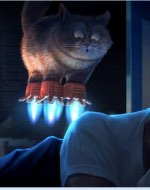 In Big Hero 6, Hiro's Japanese bobtail cat Mochi named after a type of Japanese rice cake helps humanize the robotic healthcare companion created by his brother. Baymax's infamous line while petting Mochi, "Hairy baby... ...HAIRY BABY!" has become a popular internet meme. Sure, the cat doesn't have a huge role in the film but he's just so damn cute not to include here.
In Big Hero 6, Hiro's Japanese bobtail cat Mochi named after a type of Japanese rice cake helps humanize the robotic healthcare companion created by his brother. Baymax's infamous line while petting Mochi, "Hairy baby... ...HAIRY BABY!" has become a popular internet meme. Sure, the cat doesn't have a huge role in the film but he's just so damn cute not to include here.
The character originally was to have a bigger role in the film which involved it wearing rocket powered boosters created by Hiro (concept art seen on the right). Even though the concept was abandoned before making the final film, the Japanese marketing department loved Rocket Cat so much that he continued to appear in promotional materials even after that plot point was removed from the project.
"The Japanese marketing, they saw a version of Rocket Cat in the movie and they fell in love with Rocket Cat, Baird told io9. "Just a month ago, we saw some advertising campaign for Japan and we said, 'You guys do realize that Rocket Cat hasn't been in the movie for a year now?'"
Winston in Feast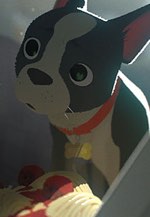 Winston is the main protagonist of Disney Animation's 2014 short film Feast which played before Big Hero 6 in theaters. Winston is a stray half grey, half white Boston Terrier dog mix who discovers a human named James on the other end of a french fry. The story follows their growing friendship over a 12-year span based on the meals they eat — all seen from Winston's point of view. Variety critic Peter Debruge wrote:
Winston is the main protagonist of Disney Animation's 2014 short film Feast which played before Big Hero 6 in theaters. Winston is a stray half grey, half white Boston Terrier dog mix who discovers a human named James on the other end of a french fry. The story follows their growing friendship over a 12-year span based on the meals they eat — all seen from Winston's point of view. Variety critic Peter Debruge wrote:
Rather than endow Winston with human characteristics, Osborne allows the dog to remain a dog, winning over audiences with his decidedly canine qualities. He's an insatiable little pup, greedily gobbling up anything put in front of him, except Brussels sprouts and other icky dishes presented after his junk-food-eating master begins to date a health-conscious young lady. With minimal dialogue, the script details how this new g.f.'s arrival impacts Winston's diet (and by extension, the relationship with his owner), culminating in a a stunningly rendered tracking shot through a restaurant in which Winston is confronted by all his favorite foods: steak, spaghetti, ice cream, etc.
Disney fans loved the dog so much that a plush of the character sold out in near-record time from Disney Stores and has sold for upwards of $350 on the aftermarket. Director Patrick Osborne based Winston on the terriers of other Disney employees. He chose the Boston Terrier breed because they wanted to be different that prior Disney films, they needed a dog that was small enough that it could be promoted to a chair at the table (and visa versa) as well as a breed that has distinct markings to help cue the audience to subtle movements.
Rocket Raccoon from Guardians of the Galaxy Rocket Raccoon is, of course, one of the more featured animal performances of the year. In the film the anthropomorphic raccoon is voiced by Bradley Cooper and played by Sean Gunn in motion capture. Despite the character's name, he may not even be a earth animal at all — when told about his resemblance to an Earth-born animal, Rocket asks "what's a raccoon?" In the film we learn that Rocket is the result of genetic engineering and we also see cybernetic implants planted in his body. within his body.So its unclear of his origins in the Marvel Cinematic Universe. But at very least, the character is clearly based on the raccoon. A raccoon named "Oreo" (seen right with Gunn) was used on set to help animators accurately capture the motion and behaviors of it for the computer animated character — Director James Gunn even took Oreo to the film's European premiere.
Rocket Raccoon is, of course, one of the more featured animal performances of the year. In the film the anthropomorphic raccoon is voiced by Bradley Cooper and played by Sean Gunn in motion capture. Despite the character's name, he may not even be a earth animal at all — when told about his resemblance to an Earth-born animal, Rocket asks "what's a raccoon?" In the film we learn that Rocket is the result of genetic engineering and we also see cybernetic implants planted in his body. within his body.So its unclear of his origins in the Marvel Cinematic Universe. But at very least, the character is clearly based on the raccoon. A raccoon named "Oreo" (seen right with Gunn) was used on set to help animators accurately capture the motion and behaviors of it for the computer animated character — Director James Gunn even took Oreo to the film's European premiere.
One of the most popular characters of the last year, it may surprise you that Rocket almost never appeared in Guardians of the Galaxy. In hindsight the character seems like such a sure bet, but the studio and creatives were very hesitant about including the character. The film's original screenwriter Nicole Perlman has said that early drafts of the film did not include the character due to "a little bit of a fear that he would come across as cartoonish because he's a raccoon." Marvel Studios head Kevin Feige was a big fan of Rocket and let the screenwriter to include the character in later drafts.
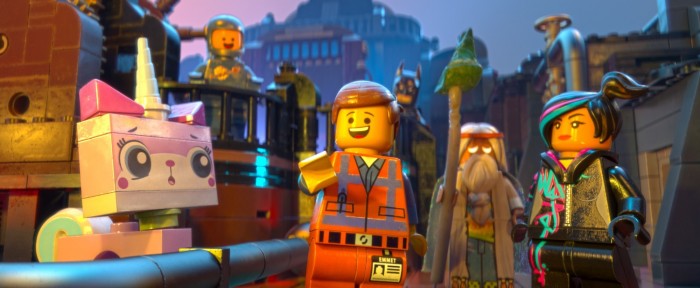 Princess Unikitty from The Lego Movie
Princess Unikitty from The Lego Movie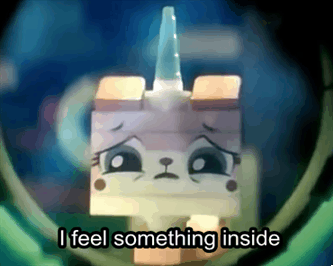 In The Lego Movie, Alison Brie voices a unicorn-kitten hybrid named Princess Unikitty, who lives in Cloud Cuckoo Land where she and the LEGO Master Builders secretly reside in safety. The LEGO wiki has a good description of Princess Unikitty:
In The Lego Movie, Alison Brie voices a unicorn-kitten hybrid named Princess Unikitty, who lives in Cloud Cuckoo Land where she and the LEGO Master Builders secretly reside in safety. The LEGO wiki has a good description of Princess Unikitty:
Unikitty is the happy-going spirit of Emmet's oddball group, and thus susceptible to strong emotions. She feels so strongly for her friends that anything that happens to them she is effected as well. Because of this, she sometimes has a hard time controlling her emotions to "stay positive". But, when it comes to protecting those she cares about from those doing harm to them, she does not hold back. At all.
So it should come as no surprise that Buzzfeed published a listicle titled "17 Signs Princess Unikitty From The Lego Movie Is All Of Us". The Federalist wrote an examination of the movie called Is The LEGO Movie The Most Subversive Pro-Liberty Film Ever? which uses an exchange between Princess Unikitty and our heroes about the rules (or lack their of) of Cloud Cuckoo Land. The Federalist called the scene "such a fantastic critique of modern 'tolerance' culture and such a good, if odd, defense of natural law that I had to check if Robby George had helped out on the screenplay."
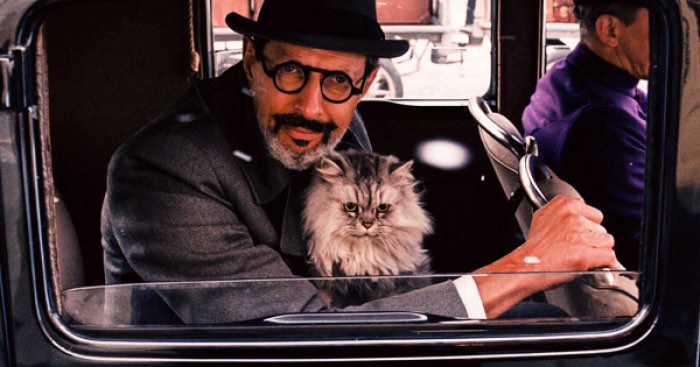 Deputy Kovacs' Cat From The Grand Budapest Hotel
Deputy Kovacs' Cat From The Grand Budapest Hotel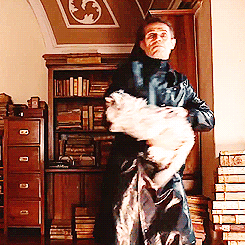 In , attorney Deputy Kovacs (Jeff Goldblum) is tasked with managing the contested estate of the late Mme. C. V. Desgoffe und Taxis (Tilda Swinton). His his diligence frustrates the surviving children who want nothing but to inherit the fortune. Dmitri (Adrien Brody) threatens Kovac into ruling quickly in their favor but when the attorney refuses, Dmitri's henchman Jopling (Willem Dafoe) throws Kovacs's cat out of his open window. Kovacs was stunned, "Did he just throw my cat out the window?" he asks, before peering out the window seeing his dead Persian cat laying in the street below. Later we see Kovacs carrying his dead cat in a plastic bag as he is being chased by Jopling.
In , attorney Deputy Kovacs (Jeff Goldblum) is tasked with managing the contested estate of the late Mme. C. V. Desgoffe und Taxis (Tilda Swinton). His his diligence frustrates the surviving children who want nothing but to inherit the fortune. Dmitri (Adrien Brody) threatens Kovac into ruling quickly in their favor but when the attorney refuses, Dmitri's henchman Jopling (Willem Dafoe) throws Kovacs's cat out of his open window. Kovacs was stunned, "Did he just throw my cat out the window?" he asks, before peering out the window seeing his dead Persian cat laying in the street below. Later we see Kovacs carrying his dead cat in a plastic bag as he is being chased by Jopling.
The New Yorker wrote an article titled "Does Wes Anderson Hate Cats?" which chronicles the filmmaker's history of killing pets in his films. But despite this extensive film history, Anderson says he doesn't hate animals, telling the Toronto Star:
"Every now and then it's nice to bring some animals into the equation, I guess. I don't own a cat but I don't have any negative feelings."
The New Yorker sums up Anderson's "rigorously unsentimental view of pets":
They are vitally important to people's lives, but also—as anyone who has ever flushed a goldfish, or buried a cat in the backyard, only to move on rather blithely knows—weirdly and unnervingly disposable. But, in the end, men and women are disposable, too. Anderson's movies have always been death-haunted. Now they are becoming increasingly gruesome, as if to prove ridiculous those who mistake his visual exuberance for a kind of twee, Pollyannaish world view. "The Grand Budapest Hotel" is packed with frivolity, but, throughout, it is a story of bodily injury (a scene with some fingers was a macabre shocker) and, ultimately, of loss. Death awaits everyone—even the cat.
Daisy, played by the beagle Andy, is quite literally the propulsive emotional force for this Keanu Reeves action film. Reeves plays the title character, a once-unstoppable hit man who has retired to quiet married life. Illness takes his wife, and Wick is lost.
Then one last connection to his ideal world arrives in the form of Daisy, a gift Wick's wife arranged to be delivered to him after her death. The distraught guy barely knows what to do with the dog, but out of respect for his wife he starts to figure it out. Caring for Daisy is his first step in rebuilding his life, and it's a clear hook on which the audience can hang our own attachment to the story. Honestly, if this movie was just about Keanu Reeves learning to be friends with this dog, we'd be in.
Then John Wick has a run-in with a douchebag gangster who wants Wick's car. Pretty soon the guy just tries to take the car, killing Daisy in the process. That lights Wick's fuse. (It's right on the poster! It's even on a fan poster, sourced here, seen at right.) Soon he's totally disassociated from the life he tried to make, and is off on a mission of revenge — nominally not for his wife, or his life, but for his dog. (Which of course symbolizes his wife and their life, and therefor the entirety of his loss.) And we're right there with him, because how horrible does a gangster have to be to kill this dog? Even the other bad guys in the film shake their head at him.
Here's an exchange between two characters, a the film's gangster boss, and an auto chop shop owner, which sums up the understanding of the importance of the dog, and the effect it will have on Wick.
"I heard you struck my son. May I ask why?"
"Because he stole John Wick's car and killed his dog."
"Oh."
Producer David Leitch sums up the approach, as they sought to cast "the cutest dog in the world."
John Wick started living life with this dog. And immediately that chance of being the person his wife wanted him to be was ripped from him. After that, he becomes the monster he was before, the anti-hero we like to watch in these kinds of movies. We set up the empathy for John Wick by going all out.
Ceasar and Koba, the apes from Dawn of the a Planet of the Apes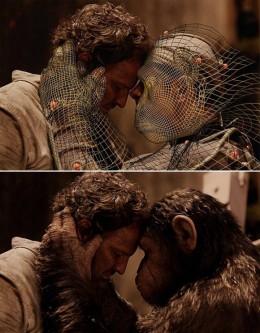
I think this one needs almost no explanation. Ceasar and Koba were performed using motion capture performances by Andy Serkis and To0by Kebbell. As you can see in the animated gif image above, their mocaptured performances were seamlessly converted to almost photo-real computer animated characters by the wizards at WETA. Ty Burr says it best in his Boston Globe article:
I hereby propose that the Academy of Motion Picture Arts and Sciences create a new category: best motion capture performance, a.k.a. best actor in digital clothing, a.k.a. best performance by a man or woman covered in zillions of electronic Post-its. The first winner — and, really, it's long overdue — would be Andy Serkis, ... who, in "Dawn of the Planet of the Apes," provides the most regal performance of the year to date as Caesar, leader of the hyper-intelligent mutant simians who are poised to take over what's left of Earth. In bearing, speech, and agonized expressiveness, Serkis's Caesar conveys the conflicts of a king with almost Shakespearean grandeur. His thoughts and passions seem to will themselves past the megapixels onto our sensibilities. Is this art? Technology? Some devilish mixture of the two? When Caesar is onscreen, it's a moot point. We're simply watching a great performance.
These two award caliber performances generating controversy in the awards circles, as awards voters continue todebate where the performance ends and digital effects begin.
Serkis has often expressed complete ownership of his motion capture performances, and has expressed frustration at how misunderstood performance-capture is. He once told The Daily Telegraph "Ten years down the line, people say, 'Oh, so you did the voice of Gollum?' Or people go, 'You did the movements for Kong?' It's frustrating, because I play Gollum and I play Kong. It is acting."
One comment in particular was the focus of a lot of scrutiny. Serkis claimed that what WETA "are doing is painting digital makeup onto actors' performances" which some in the animation and tech fields felt dismissed the artistry and world involved in generating the characters from the performance capture. But as it turns out, the phrase "digital make-up" was something coined by WETA artists, and director Matt Reeves has been leading the charge when it comes to Serkis' performance getting its due desserts.

